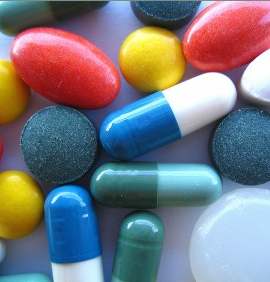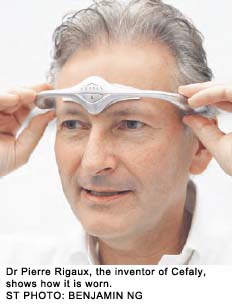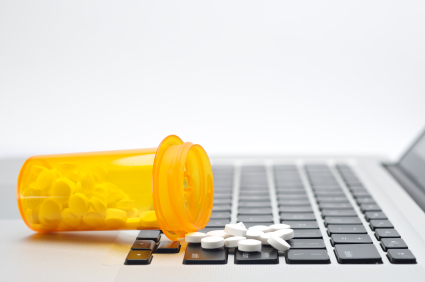U.S. Patients with Bipolar Disorder Have More Stressors in Childhood and Prior to Illness Onset
In research published since 2008, our Editor-in-Chief Robert M. Post and colleagues in the Bipolar Collaborative Network have compared patients with bipolar disorder in the United States to those in Germany and the Netherlands. Compared to the European sample, patients in the US have more genetic vulnerability to bipolar disorder (by having a parent with bipolar disorder), earlier onsets of their illness, more complicated courses of illness, greater treatment resistance, and more medical comorbidities. Patients in the US also have more psychosocial stress.
The researchers are now turning their attention to these psychosocial vulnerabilities, and in a new paper that will be published in Psychiatry Research (late in 2013 or early in 2014), the authors show that patients in the US had more stressors both in childhood and just prior to the onset of their illness. Childhood stressors analyzed in the study were verbal abuse, physical abuse, and sexual abuse. Stressors in adulthood included indicators of a lack of social support, troubles with finances or employment, lack of access to health care, and medical comorbidities.
The stressors patients experienced just prior to their most recent episode of bipolar illness were related to: stressors in childhood, an earlier age of illness onset, anxiety and substance abuse comorbidity, lower income, both parents having an affective illness such as depression, and feeling more stigma.
The new research suggests that for patients with bipolar disorder in the US, adverse life events in childhood and later in life are more prevalent than they are for patients in the Netherlands or Germany. Earlier and more effective approaches to these stressors, such as the Family-Focused Therapy developed by David Miklowitz and Kiki Chang, could potentially slow the onset or progression of bipolar illness in this country.
Cinnamon’s Positive Effects in Type II Diabetes
Cinnamon has multiple positive effects that were affirmed in a meta-analysis by Robert W. Allen et al. in Annals of Family Medicine in 2013. Cinnamon lowered blood sugar, insulin levels, triglycerides, and low-density lipoproteins (“bad” cholesterol) while increasing high-density lipoproteins (“good” cholesterol). Cinnamon did not lower hemoglobin A1C, a global measure of glucose dysregulation, but that result could be explained by the short durations of some of the studies included in the meta-analysis.
Editor’s Note: Cinnamon’s role in the fight against type II diabetes remains to be determined, but a little bit may help those with diabetes or at risk for it. The researchers who produced the meta-analysis could not make a recommendation about how much cinnamon to add to one’s diet because the studies included in the meta-analysis had explored a wide range of doses.
Citicoline Might Improve Memory
 We’ve written before that the dietary supplement citicoline improved depression in both unipolar and bipolar patients with methamphetamine dependence, reduced cocaine use in bipolar depressed patients with cocaine dependence, and improved cognition in healthy middle-aged women. Findings from a 2013 Italian study by Gareri et al. published in Clinical Interventions in Aging suggests that citicoline improves mild vascular cognitive impairment in older adults, though the study was not randomized, so its results may not be reliable. Citicoline is a natural substance found in the brain and the liver that can also be taken as a nutritional supplement.
We’ve written before that the dietary supplement citicoline improved depression in both unipolar and bipolar patients with methamphetamine dependence, reduced cocaine use in bipolar depressed patients with cocaine dependence, and improved cognition in healthy middle-aged women. Findings from a 2013 Italian study by Gareri et al. published in Clinical Interventions in Aging suggests that citicoline improves mild vascular cognitive impairment in older adults, though the study was not randomized, so its results may not be reliable. Citicoline is a natural substance found in the brain and the liver that can also be taken as a nutritional supplement.
The study examined 349 patients over age 64 (mean age 79.9) who had memory impairment and evidence of vascular lesions in the brain (but not Alzheimer’s disease). Participants who received citicoline (500mg twice daily for 9 months) scored better on a memory examination at 3 months and at the completion of the study, while participants who did not receive citicoline performed worse on the exam. Those who received citicoline also saw some statistically non-significant improvement in mood.
The researchers believe that citicoline’s effects may also extend to Alzheimer’s dementia because citicoline contributes to the synthesis of acetylcholine. (Most Alzheimer’s drugs inhibit the breakdown of acetylcholine).
Side effects were minimal, and included occasional excitability or restlessness, digestive intolerance, and headaches.
Most Online Pharmacies Fake, Says FDA
In late 2012, the Federal Drug Administration announced that 97% of online pharmacies violated state or federal laws and/or safety and practice standards set by the National Association of Boards of Pharmacy. Medications sold by fake pharmacies may be fake, expired, contaminated, not approved by the FDA, or unsafe.
Here are some warning signs that may mean an online pharmacy is fake:
- Allows you to buy medications without a prescription.
- Offers prices that are too good to be true.
- Sends spam emails offering discount prices.
- Is located outside the US.
- Is not licensed in the US
Real pharmacies are licensed by the state where they are located. They should provide a physical address and phone number, where you can reach a pharmacist who can answer your questions.
Bicycling Fast May Improve Parkinson’s Symptoms
Bicycling at speeds of 77–80 rpm seems to benefit patients with Parkinson’s disease. After neuroscientist Jay Alberts and one of his patients rode a tandem bicycle across Iowa to raise awareness of the illness, he noticed that her symptoms had improved. He had ridden in front, setting a pace that forced her to pedal faster. Their experience inspired the study, in which 26 patients with Parkinson’s were assigned to either ride a stationary bike at their own pace, or ride at a forced rate, where a trainer in the front seat of a tandem bicycle controlled the pedaling rate, which was at least 30% faster than the voluntary rates. After 8 weeks of thrice-weekly pedaling, the forced-rate group saw a 35% improvement in symptoms, compared to no improvement in the voluntary-rate group.
Study authors used functional connectivity magnetic resonance imaging (fcMRI) to measure levels of blood oxygen in the brain before, immediately after, and 4 weeks after the 8 weeks of exercise therapy. In the fast pedaling group, task-related connectivity between the primary motor cortex and the posterior part of the thalamus improved. Some cortical regions in the brain showed less activity, suggesting that Parkinsons’ patients who usually must use these areas to compensate for their motor deficits required less of this alternative brain activity after the exercise therapy. The research was presented at the Radiological Society of America’s annual meeting in 2012.
Meditation Improves Depression and Stress in Adolescents
 A recent study in the UK compared students whose schools instituted the 9-week international Mindfulness in Schools Program (MiSP) curriculum to those who were taught a standard curriculum. Students at schools with MiSP were taught techniques for sustaining attention aimed at changing their thoughts, actions, and feelings.
A recent study in the UK compared students whose schools instituted the 9-week international Mindfulness in Schools Program (MiSP) curriculum to those who were taught a standard curriculum. Students at schools with MiSP were taught techniques for sustaining attention aimed at changing their thoughts, actions, and feelings.
Students who participated in MiSP training had fewer depressive symptoms immediately after the training and three months later. They also reported lower stress and greater well-being at follow-up. Those students using the techniques they learned in the program more consistently had better scores for depression, stress, and well-being than their peers who used the techniques less often. The study by Kuyken et al., which was published in the British Journal of Psychiatry in 2013, included 522 students between the ages of 12 and 16.
Psychological well-being has been linked to better learning and performance in school, in addition to better social relationships. Researchers suggested that because this kind of mindfulness training is designed to help students deal with everyday stressors and experiences, it has benefits for all students, regardless of their level of well-being.
Statin Benefits for Mood, Brain, and Heart Seem to Outweigh Diabetes Risk
 Statins are a class of drugs that are the most commonly prescribed treatment for high cholesterol. They can reduce risk of heart attack and stroke in people with a history of cardiovascular disease. New research is beginning to clarify statins’ other effects, which on the negative side can include increased risk of diabetes and liver and muscle inflammation, and on the positive side can include reduced risk of cataracts and prevention of depression and dementia.
Statins are a class of drugs that are the most commonly prescribed treatment for high cholesterol. They can reduce risk of heart attack and stroke in people with a history of cardiovascular disease. New research is beginning to clarify statins’ other effects, which on the negative side can include increased risk of diabetes and liver and muscle inflammation, and on the positive side can include reduced risk of cataracts and prevention of depression and dementia.
In late 2012, the American Heart Association Scientific Sessions included a discussion of five new studies suggesting that the cardiovascular benefit of taking statins is worth the slightly increased risk of diabetes. Researchers at the conference explained that cardiovascular events are much more serious than the small increase in risk of diabetes. While all five studies showed an increase in diabetes risk, the absolute increase was low and depended on the patients’ level of risk prior to treatment and how high their doses of statins were. There are strategies that can reduce diabetes risk in statins users, including using bile-acid sequestrants, reducing niacin, and monitoring glucose. Consensus at the conference was that statins’ cardiovascular benefits are so important that the drugs shouldn’t be avoided because of concerns about diabetes.
In addition, statins’ beneficial effects on mood have been reported for several years. In 2010, an epidemiological study by Pasco et al. in Psychotherapy and Psychosomatics showed that subjects without depression were less likely to develop a new onset of depression if they were treated with statins compared to those who were not. Stafford et al. reported in the Journal of Clinical Psychiatry in 2010 that patients taking statins had a 79% decreased likelihood of depression at 9 months of follow-up. Moreover, a 2012 meta-analysis by O’Neil et al. in BMC Medicine reported that overall, statins had positive effects on mood.
A recent huge Taiwanese study of statins suggests that the drugs can also prevent dementia. At the European Society of Cardiology congress in 2013, Tin-Tse Lin reported that among 58,000 people studied, those taking the highest dosage of statins had a threefold decrease in risk of developing pre-senile and senile dementia. He explained that it was the potency of statins such as atorvastatin and rosuvastatin that provided the cognitive benefit. However it is high doses that lead to less benign side effects such as liver and muscle inflammation.
A separate US study presented at the congress showed that statin use also lowered risk of developing cataracts by 19%.
Nerve Stimulation Device May Reduce Migraines
 Migraine headaches are a neurological condition in which throbbing headaches (usually on one side of the head) are accompanied by other symptoms such as nausea and sensitivity to light or sound. A recent study suggests that a device worn as a headband that can stimulate the trigeminal nerve through the skin can reduce incidence of migraines. The device, called Cefaly, is produced by Belgian company STX-Med.
Migraine headaches are a neurological condition in which throbbing headaches (usually on one side of the head) are accompanied by other symptoms such as nausea and sensitivity to light or sound. A recent study suggests that a device worn as a headband that can stimulate the trigeminal nerve through the skin can reduce incidence of migraines. The device, called Cefaly, is produced by Belgian company STX-Med.
In the randomized controlled study by Schoenen et al. published in Neurology this year, using the device for 20 minutes a day for 3 months reduced migraine days by 25% and reduced migraine attacks by 19%. Sixty-seven patients who had at least 2 migraines per month were randomized to receive either treatment with the Cefaly device or a sham stimulation that caused a tingling sensation without stimulating the trigeminal nerve.
Schoenen told Medscape Medical News that the device may be a useful addition to current treatments, and has the benefit of not producing side effects.
The device is already available in Europe, Canada, and several South American and Middle Eastern countries. It is currently awaiting approval in the US. In those countries where it is approved, it does not require a prescription and can be bought directly by a patient at a cost of €295 or $299 (CAD).
Ambien Linked to Emergency Room Visits, Among Other Risks
Zolpidem, better known by one of its trade names, Ambien, is widely prescribed for the short-term treatment of insomnia. It can sometimes cause adverse reactions, particularly among women and the elderly. The Substance Abuse and Mental Health Services Administration (SAMHSA) has reported that over a recent 5-year period, emergency department visits for adverse reactions to zolpidem increased by almost 220%.
Peter Delaney, Director of SAMSHA’s Center for Behavioral Health Statistics and Quality, suggested that doctors should consider alternative strategies for treating insomnia, including improving sleep hygiene by avoiding caffeine, exercising regularly, and sleeping in a quiet, dark room. He also suggested that doctors should be aware of what other medications a patient is taking, and ideally all of a patient’s prescriptions should be collected from the same pharmacy, so the pharmacist can act as a second pair of eyes identifying possible drug interactions.
Women and men metabolize zolpidem differently, and according to Sam Fleishman of the American Academy of Sleep Medicine, many women can still be impaired by the drug 8 hours after taking it. In 2013, after reports of adverse reactions to zolpidem increased, the Federal Drug Administration (FDA) required manufacturers of drugs containing zolpidem to reduce the recommended dose for women by half, from 10 mg to 5 mg, or 12.5 mg to 6.25 mg for the extended-release version. The FDA also suggested halving the dosage prescribed to the elderly, and reducing the recommended dose for men.
Some of the adverse reactions to drugs containing zolpidem include daytime drowsiness, dizziness, hallucinations, sleepwalking, and even “sleep driving.” When combined with antianxiety medications, narcotic pain relievers, or alcohol, zolpidem’s sedative effects can be enhanced to dangerous levels.
Safe Upper Limit of Vitamin D Identified
A recent study confirmed that low levels of vitamin D can increase risk of death and determined a safe upper limit for vitamin D levels. The research, published by Yosef Dror et al. in the Journal of Clinical Endocrinology & Metabolism, showed that safe blood levels of vitamin D are between 20 and 36ng/mL. People with levels above or below this range were at greater risk of mortality or acute coronary syndrome.
Dror suggests that calcium supplement dosages should be specifically tailored to individuals based on levels in their blood.
The research comes from 54 months of data collection during which 422, 822 members of Clalit Health Services, an Israeli health maintenance organization, were tested for vitamin D levels. Only 3% percent of this population were at risk because of high levels of the vitamin, while 62% were at risk due to low levels of vitamin D.
Editor’s Note: Watch out for low vitamin D3. Even if a patient’s levels of D3 are in the normal range, supplementation can help antidepressants work better. According to a study published in the Australian and New Zealand Journal of Psychiatry, adding 1500 IU of vitamin D3 to the treatment regimen of depressed patients taking fluoxetine (Prozac) improved their response significantly.







